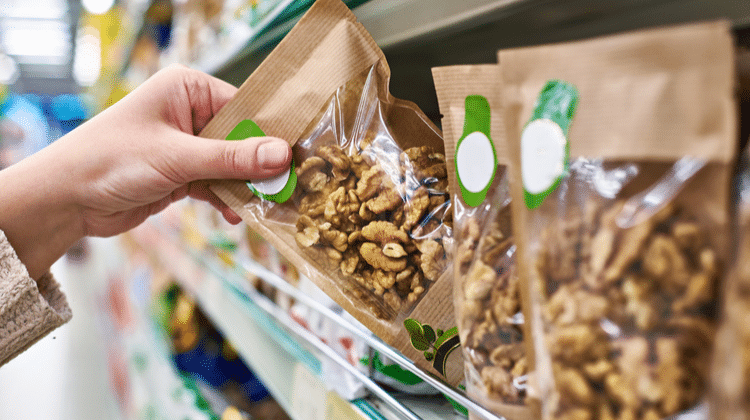
Brought to you by James Dawson Enterprises:
Packaging a product is a crucial step to grow your business and keep the product safe from damage or contamination. The packaging process includes various stages and detailed specifications that need to be considered carefully in order to stay under your budget. That means you need to understand all of the steps from the beginning to avoid the costs of revisions and to create the best design for the target customer.
Here are some tips that will help you package your product:
Define Your Target Audience
You need to understand your target consumer before you can design effective packaging that promotes your brand. A detailed analysis makes the task easier for graphic and structural designers to develop the most appealing package for the target market. This also saves time, effort, and costs.
Every product has a unique set of requirements, such as tamper-evident seals, child-resistant caps, easy-to-open features, special labeling, or multiple languages. Try to identify your target market so you can develop an ideal package.
Know Your Retailer or Distributor Requirements
The designers must know whether their customers are retailers or distributors. These two different audiences may require different specifications for their products. The designers must be aware of these requirements before they begin to develop packaging. This also helps to create a cost-effective design while meeting the needs of the customer.
In-Store Placement
The location where the product will be sold is another important factor to consider during the design of retail packaging. Make sure you research what’s already being sold at retail and what will fit in the given space. The material and design of the product packaging depends on where and how the product will be displayed.
For example, frozen products could be placed in a freezer with the front panel of the package visible to the consumer. Products might also be stacked on a shelf or hung on special display. The location and type of space on the shelf should be considered to ensure that the package is placed not only fits but also offers visual appeal to draw the attention of passing consumers.
Assess Your Product Needs
The key aspect of packaging is to enable safe and effective delivery of a product to the market. To create an ideal package, you must consider the following:
- Physical – odor, contamination, shock, vibration, static, compression
- Temperature – determine temperature sensitivity of the product
- Moisture – absorbency of the product
- Barrier – to make a product shelf-stable and to extend the shelf-life of a product
- Storage – shipping, storage, and distribution
Internal Product Handling
Not only do you need to understand customers’ needs for packaging, but you also need to understand distributors’ and retailers’ needs related to storing, processing, and shipping the product as well as the type of packages required along the way. For example, using an industrial vacuum sealer compresses the product and keeps it safe while making the delivery process easier.
How to Choose a Packaging Supplier
The packaging supplier you choose to work with has a significant impact on your business – especially when it comes to product safety and security. Therefore, make sure you consider these points when choosing your supplier:
- Stability – Make sure the supplier has a history and established reputation. Avoid dealing with new suppliers that don’t have a record of satisfied customers.
- Reliability – Investigate their quality and supply guarantee, and ask for references. Research why companies chose a particular supplier or why they did not to learn more about their reputation in the market.
- Credibility and Professionalism – A reliable supplier will meet your needs and help you grow. They’ll also provide safe and on-time deliveries.
Supplier Agreements – What You Need to Know
Make sure you discuss all your needs and terms of the Supplier Agreement before placing your first order. These are some questions you can ask before placing the order:
- What is their lead-time?
- What services do they offer?
- What are the costs?
- What are their terms of sale?
- What certifications do they have?
Budget for Your Packaging
Planning your budget early in the process will help you choose the right packaging and supplier. You can get a lot of this information through online research or asking your suppliers for help.
Design the Packaging
Designing your packages includes size, shape, density, weight, and case count. It’s also important to think about shipping considerations like how your packages will be shipped in bulk, how they’ll fit on pallets, and so on. These are some points to be kept in mind when designing your package:
- Type and size of pallet
- Pallet configuration
- Maximum/minimum pallet height
- Pallet load weight
- Material specifications (moisture resistance, strength)
- Design specifications
- Protective packaging (bubble wrap, foam, inserts)
- These may be subject to customizations depending on the customer’s need for size and material.
Graphic Designs for Packaging
New graphics designs can be a time-consuming and costly procedure. Make sure you work with an experienced package designer who understands the nuances involved in not just creating a great looking package design but also a functional design.
Conclusion
The tips provided above can help you avoid extra costs and while ensuring you get the best package design possible. However, communication remains an important factor that should be considered by the manufacturer, distributor, retailer, and designer from the beginning of stages. Safe packaging and budget concerns are often dependent on the customization of a product, so make sure you choose your designer wisely for the best results.